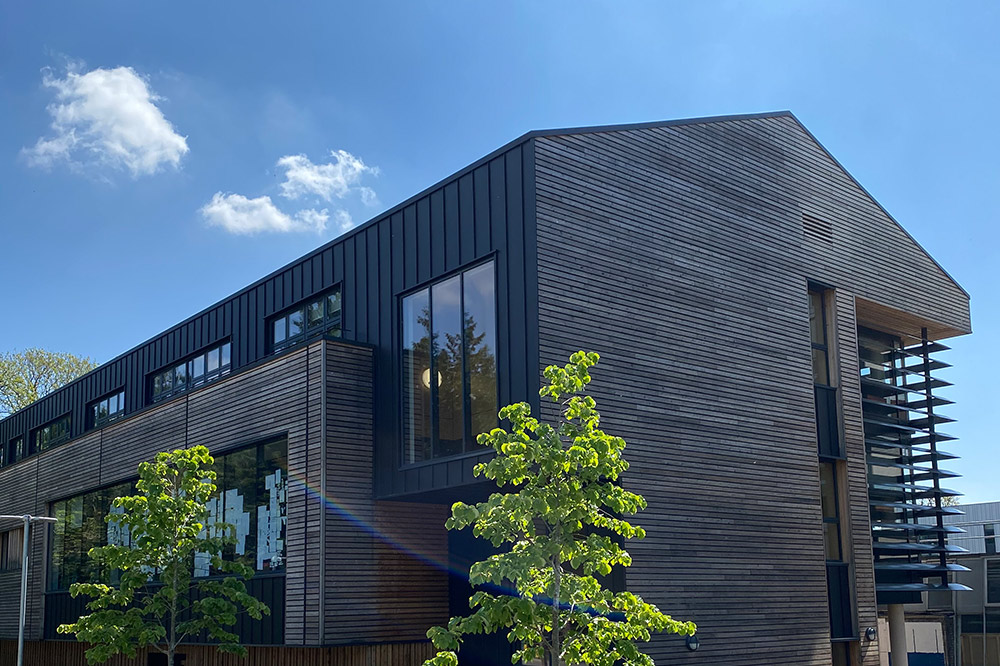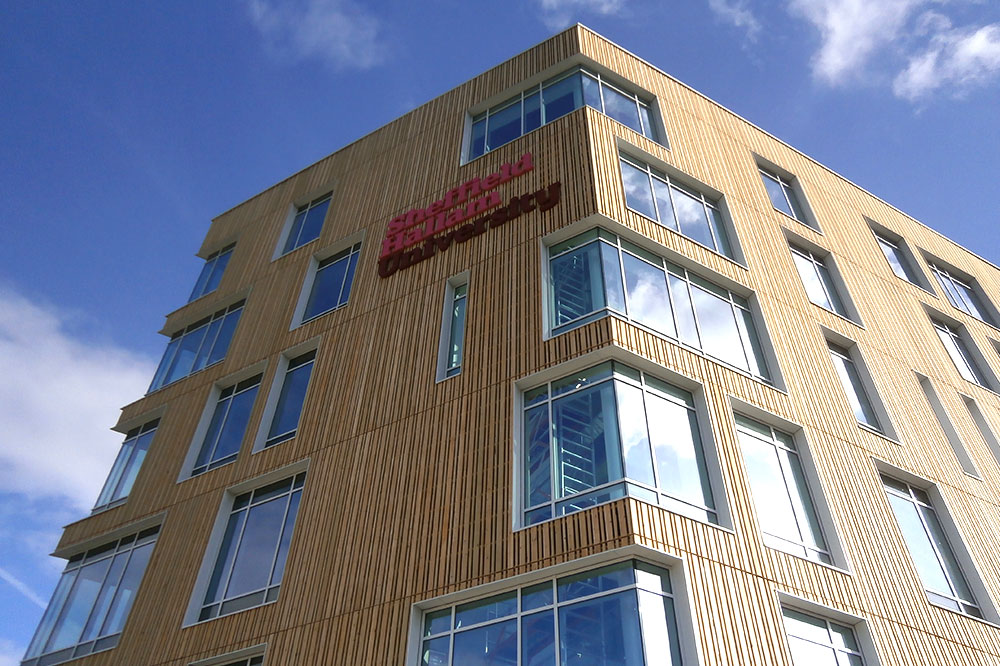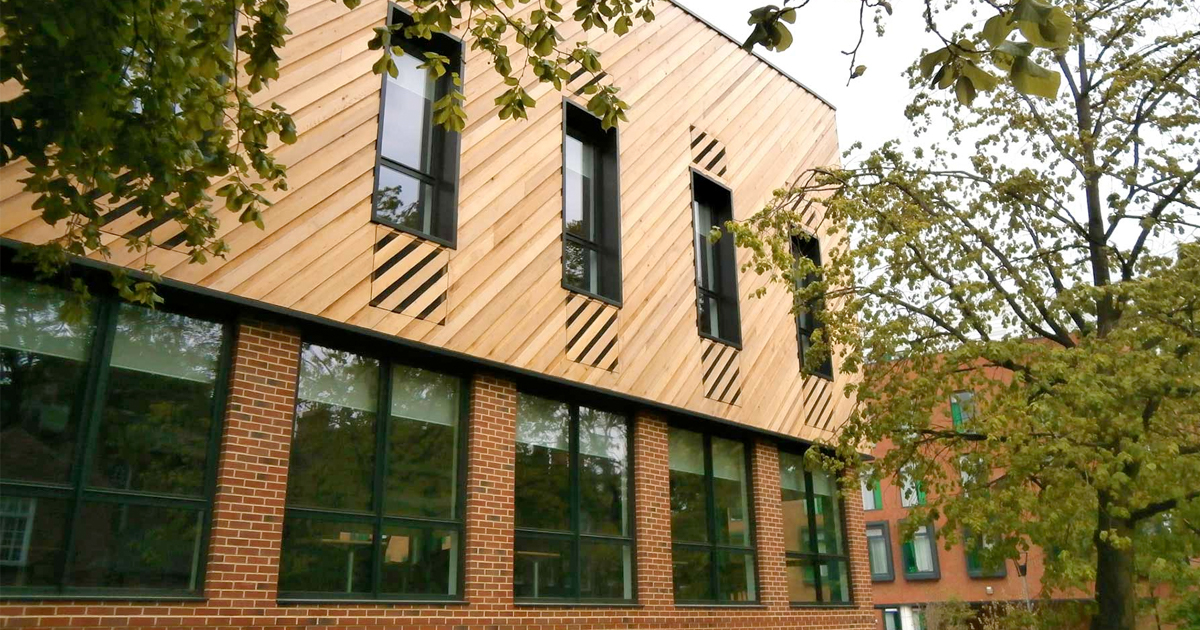What Are the Best Types of Sustainable Building Materials?
The environmental impact of construction is well known. That’s why more and more architects, contractors, and self-builders are looking make sustainable choices where possible. Opting for alternative materials can be a great way to minimise the environmental impact of a build – now and long into the future. But what defines a sustainable building, and what are the best eco-friendly materials to use?
NORclad provide PEFC and FSC certified timber to clients all over the UK. With our quality range of cladding, we help building projects of all sectors and scales harness the benefits of sustainable timber.
In this article, we explain everything you need to know about sustainable building materials and the best types to choose.

What is Sustainable Construction?
Sustainable construction is a practice of using environmentally friendly processes at every stage of a structure’s creation, from design to construction to operation to deconstruction and end of life. This includes the materials and building process, but also to the finished structure’s long term environmental impact. It goes without saying, but the end result of sustainable construction must be a sustainable building.
Project will use mainly renewable or recyclable materials which contribute to a reduced impact during the building’s lifespan. A sustainable project might also consider the health and comfort of users, incorporating plenty of natural light and integrating biophilic design elements.
And of course, sustainable construction also involves improving resource efficiency and minimising waste. Around the site, great care is taken to limit energy consumption and protect the local environment.
Essentially, it’s about having an environmental plan for the project and ensuring at every opportunity that impact is limited. It’s about thinking holistically when designing a project and making greener decisions wherever possible.

Why is it Important to Use Sustainable Building Materials?
The built environment accounts for approximately 40% of UK carbon emissions, and on a global scale, the construction industry is responsible for 11% of our global carbon footprint (source). Large proportions of materials used in construction are not recycled, and the harmful chemicals used onsite impact local wildlife and the construction workers themselves.
Posing a significant threat to our hopes of achieving net zero by 2050, the construction industry needs to start a rapid process of decarbonisation. From designing for long term sustainability to reusing materials where possible and even opting for non fossil fuel powered machinery, there are many ways contractors and architects can look to limit emissions.
A key way of doing this is to make a green choice when it comes to materials. With a host of alternatives on the market that balance eco-friendliness and function, choosing sustainable building materials is the easiest way to make a difference.
Read next: What is Green Architecture & Why Is It Important?

What Are Sustainable Building Materials?
So, we know it’s important to use them, but how do we actually define what makes a building material sustainable? Essentially, it’s to do with the material’s growth or creation, how it is subsequently used within a project, and whether any waste can be disposed of in an eco-friendly way. A material can be classed as sustainable if it minimises its impact, but it can also gain the title if it actively restores the environment through absorbing carbon dioxide. Here, timber products come to the fore, boasting dramatically reduced impact at every stage of their life from growth to manufacturing to disposal.

Benefits of Sustainable Building Materials
Though environmental concerns drive most people to choose sustainable building materials, there are a host of other advantages. Below, we highlight some of the most significant.
Longevity
Sustainability is about longevity. Accordingly, sustainable buildings are designed to last for a long time. Many sustainable building materials are robust, low maintenance, and provide long term environmental benefits such as better insulation. Timber, for example, is highly durable depending on the wood used, and can be treated further to limit fungal decay or provide enhanced fire protection.
How Long Does Timber Cladding Last? >
Comfort
Buildings created using sustainable materials can actually be more comfortable to spend time in. That’s because sustainable constructions often maximise natural light to limit reliance on electricity. Eco-friendly materials also provide a greater degree of acoustic and thermal comfort because they tend to be highly efficient insulators.
Related: 8 Benefits & Advantages of External Building Insulation for Your Property
Health
It might come as a surprise, but the buildings we spend time inside can actually have a significant impact on our health. Some construction materials have been shown to release harmful toxins such as carcinogens. Timber and other sustainable options don’t. Instead, studies have shown they reduce stress and anxiety and nurture more positive social interactions. There’s even evidence to suggest that timber can lower blood pressure!
Wellness Interior Design Ideas
Value
With sustainability a priority, maximising a construction’s eco credentials can pay dividends when you come to sell it. That’s because better insulation and greater longevity are likely to increase a building’s value and provide a significant return on your initial investment.
Cost
Despite cost being often cited as a barrier to sustainable construction, choosing eco-friendly materials can actually be incredibly cost effective. Of course, some sustainable materials command a premium price, but others, like timber, are highly economical options. Timber cladding can even be prefabricated off site, minimising the cost of installation. And, of course, sustainable materials save money down the line too with better energy efficiency throughout the building’s life.

Best Types of Sustainable Building Materials
Timber
Timber is one of the best sustainable materials you can use in your project, and that’s not just favouritism talking! Wood is renewable, absorbs carbon dioxide, and totally biodegradable. It can also adapt to suit a wide range of design styles, providing plenty of aesthetic potential.
Timber Cladding Design Inspiration >
Recycled Steel
Using steel that already exists can be a great way to harness the advantages of the material without the environmental impact. By opting for recycled materials where possible throughout the build, you’ll limit the amount of unnecessary waste going to landfill.
Earth
Earth is one of the oldest building materials, used from the very beginnings of human civilisation. Today, people are rediscovering the benefits of cobb, rammed earth, and clay and incorporating these materials into modern designs. Highly durable, structures built with earth have pleasant internal environments with a stable ambient temperature.
Reclaimed Timber
Reclaimed timber doesn’t just minimise the amount of perfectly usable wood going to landfill. It also adds a unique aesthetic to a build. Timber is a natural material, meaning it changes slightly as it ages, providing distinctive colours and textures. Why not incorporate some into your project?
The Ultimate Guide to Using Reclaimed Timber >
Bamboo
Bamboo is quick growing and highly renewable, making it a good option for certain projects. It’s important to keep in mind that emissions during transport may negate eco credentials, so only choose bamboo if you can source it locally. With a higher tensile strength than many traditional construction materials, bamboo is becoming increasingly popular in modern constructions.

Sustainable Timber Cladding Supplier Bristol
NORclad are a leading manufacturer of sustainable timber cladding. Based near Bristol, we’ve supplied our quality cladding to exciting projects across the UK, and are passionate about the environmental benefits of building with wood. Sourcing our timber from responsible forests in the UK and Switzerland, our cladding can help you fulfil your environmental commitments and take your design to the next level.
Talk to us today about your project!
Read next: Benefits of Using Wood for Your Next Project


















